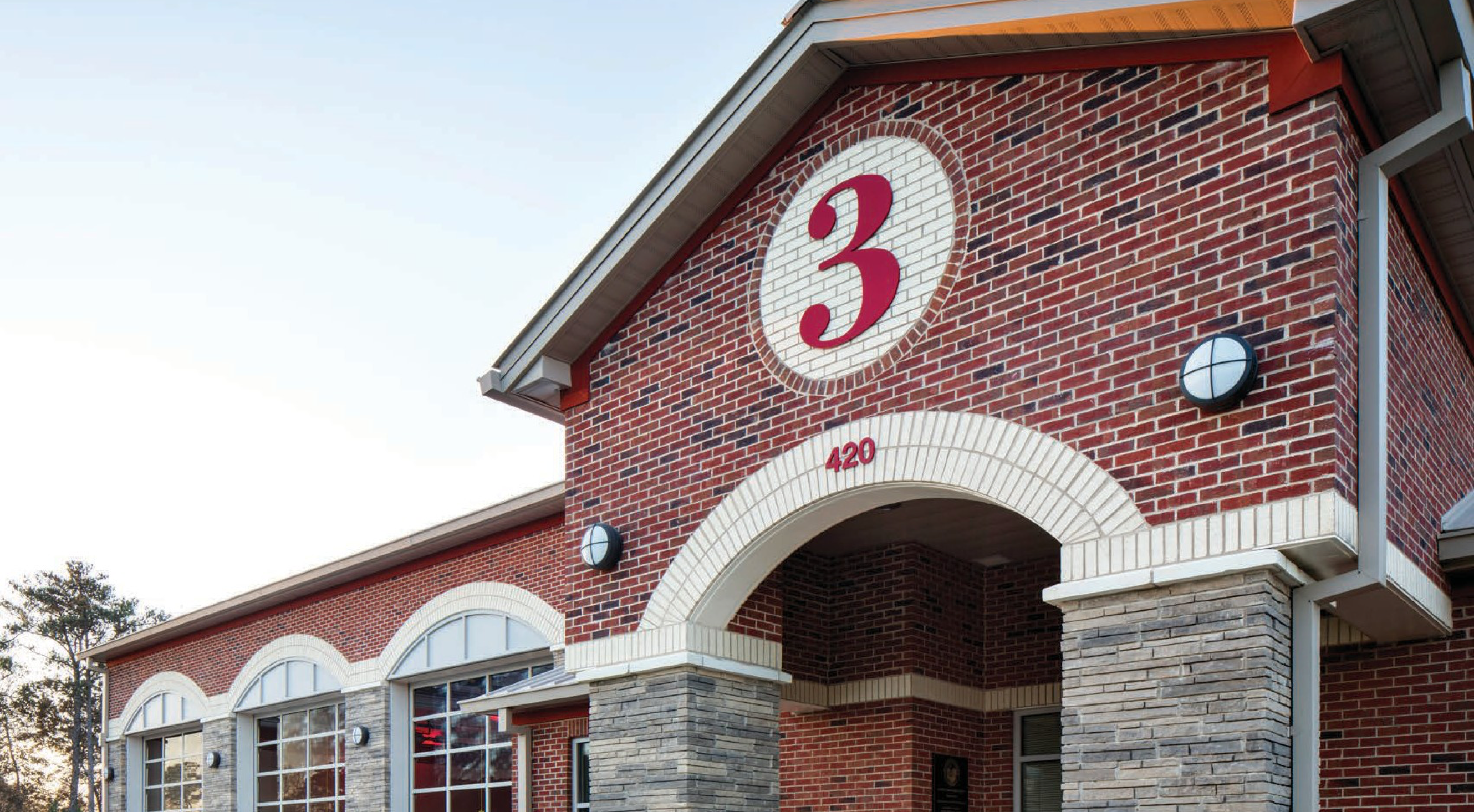From increasing escape time and reducing flame spread to speeding recovery, masonry is critical to fire safety.
Fire is one of the most devastating threats a building faces. It is one with many potential causes, such as human error or electrical malfunctions, or weather events such as hurricanes, tornadoes and lightning storms. Because fire can move quickly through a structure, it can cause severe damage before even a well-timed response occurs.
Choosing the Right Resilient Material
To protect a building and its occupants, designers employ a wide variety of safeguards, ranging from fire suppression systems and placement of exits to the use of fireproof or resilient building materials such as steel, masonry, gypsum and concrete. As a code-recognized non-combustible material, concrete is an excellent material choice. From structural block to designer colors and textures of veneer, concrete is also one of the most aesthetically versatile resilient materials for both the structure and facing surfaces of a building.
Used for exterior walls or a roof, concrete keeps fire from jumping from building to building in close quarters.

Additionally, masonry architectural blocks and veneers can provide
non-combustible assurance in combination with numerous aesthetic options for designers.
Fire Resistant Materials and Insulation
One convenient, cost-saving option for veneer wall surfaces is to use Insulated Concrete Masonry Unit (ICMU) systems, which incorporate pre-assembled Structural Masonry Unit (SMU), a molded expanded polystyrene insulation insert and thin veneer face. Because most insulation is flammable, the International Building Code mandates that these materials be protected by fire-resistance-rated materials or assemblies in wall and roof assemblies, to prevent the plastic insulation from contributing to the spread of fire in a building.
Learn more about ICMU wall systems in the video below.
Noncombustible, Durable, and Economical
Within a building, concrete containment walls buy firefighters time to control the spread while civilians exit. Since it doesn’t burn, concrete also will not contribute to the buildup of smoke and toxic gases, the inhalation of which is the primary cause of death by fire.
It’s important to note, slower burning wood products, those that have been charred, have been promoted for use as a sustainable alternative for tall buildings. However, the National Fire Protection Association states,
“Previous research has shown that timber elements contribute to the fuel load in buildings and can increase the initial fire growth rate. This has the potential to overwhelm fire protection systems, which may result in more severe conditions for occupants, fire fighters, property and neighboring property.”
In fact, charring can increase fire intensity and burn rate while adding to the smoke created by the fire.
Concrete in the Aftermath of a Fire
After a fire, concrete masonry walls often need only cleaning and repair. In fact, only one percent of concrete buildings are demolished due to fire.

The greatest damage concrete masonry walls sustain in a fire is often that resulting from lost support (when other materials give way around the masonry), and not from direct contact with the fire.
Concrete masonry is a reliable component in protecting a building, its assets, and occupants from fire. With so many attractive sizes, styles, colors, and systems available for structural and non-structural use, it can also be the most seamless fire protection system in a building.

Fire Resistance Rating of Brick Masonry

In considering the fire resistance ratings of several brick masonry wall assemblies tested using ASTM E119 procedures, The Brick Industry Association notes: “Brick masonry walls successfully withstand the load during the fire endurance test and the hose stream test conducted immediately after the wall has been subjected to the fire exposure. This structural integrity of brick masonry walls is attested to in many fires where the masonry walls have remained standing when other parts of the building have been destroyed or consumed during the fire.”
We offer a wide selection of concrete and masonry products. We'd love to help you with your next building project.


